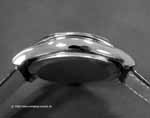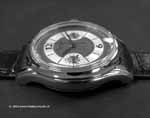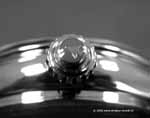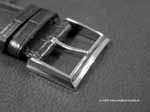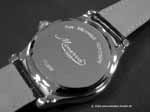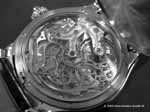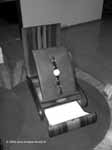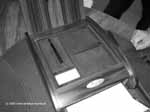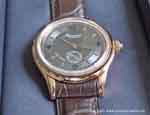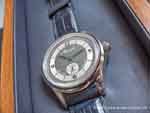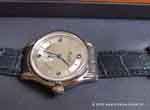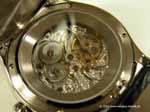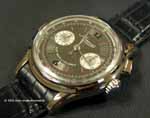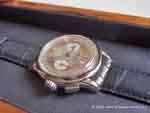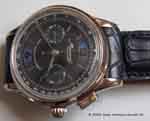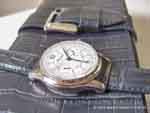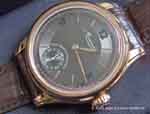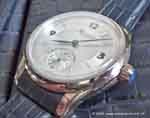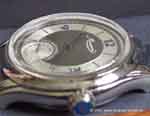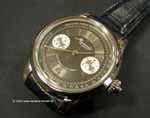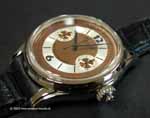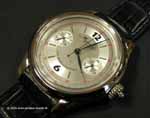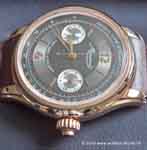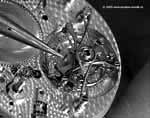Like Phoenix from the ashes - the astonishing rebirth of Minerva SA, Villeret
by Magnus Bosse, May 2005
Part
3
click on small images to view full-size ones!
3.
The current Minerva Collection
The new collection immediately catches one's eyes with the unique case
construction. Common to all watches is the elaborated case shape with
convex and concave forms (small image top, left), an extremely costly
to produce vaulted sapphire crystal (reportedly as expensive to produce
as a traditional standard movement; small images top, left middle),
a crown with an enamelled 'Minerva' logo (small image top, right middle)
and buckle with reflects the case shape once more (small image top,
right).
The remarkable movements are hidden under a hinged back cover (except
the Tourbillon watch), which are concavely formed to perfectly follow
the shapes of the owner's wrist (small image bottom, left). But where's
the pusher to open the case-back? The solution Minerva opted for shows
how much toughts went into their timepieces: The case-back mechanism
is operated by a push on the upper noose of the strap and releases,
via the spring-bar that attaches the strap to the lugs, a small pin
(small image bottom, middle). Then the back can be opened to allow a
view on the marvel behind it (small image bottom, right).
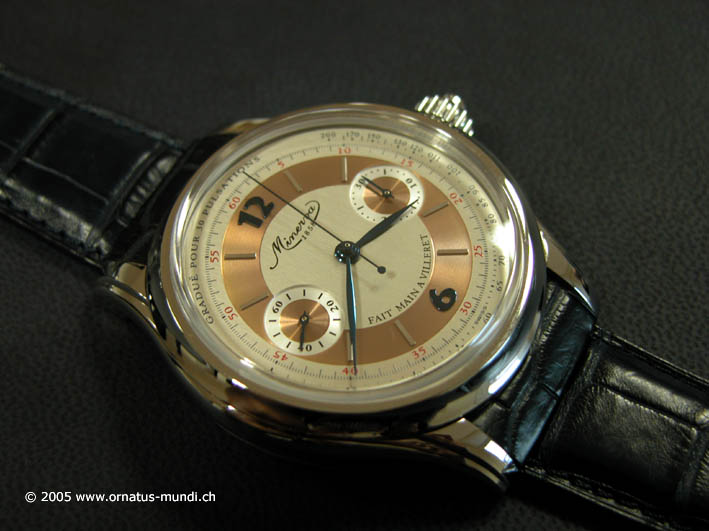
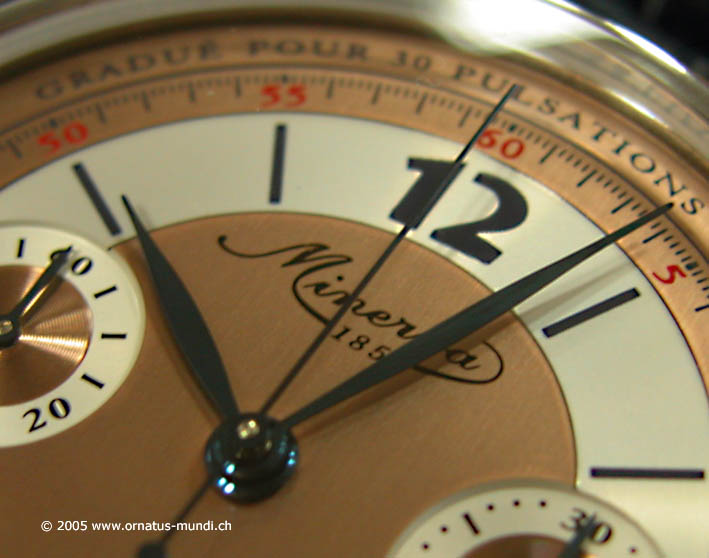
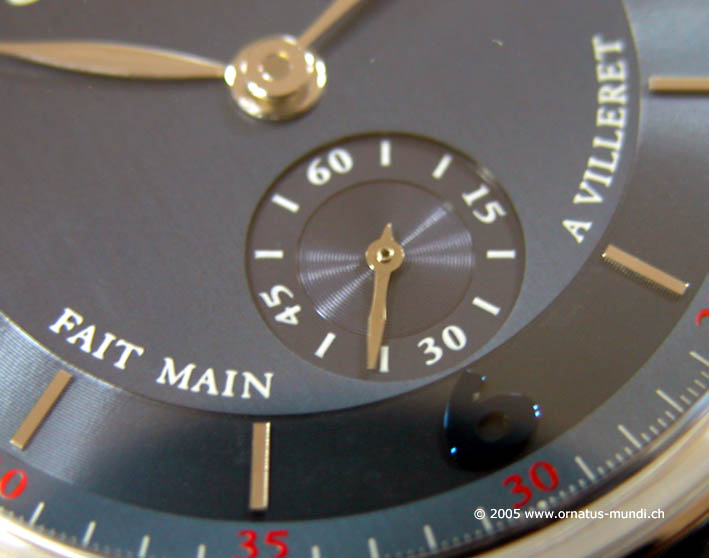
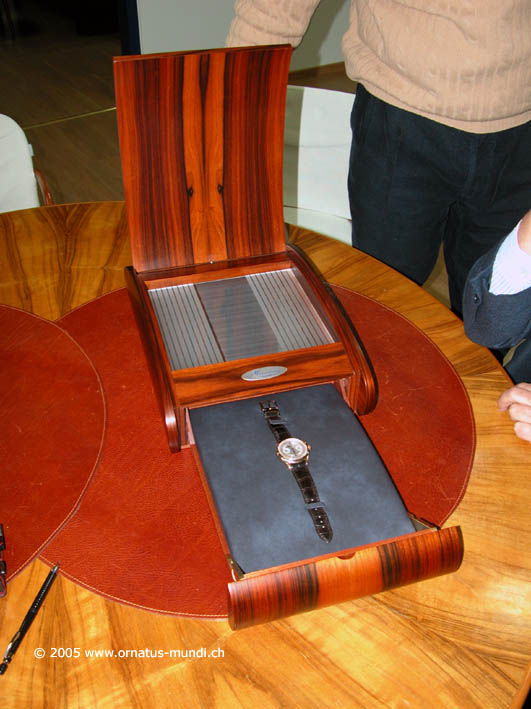
I want to start with the 'simplest' Minerva Movement, the Cal. 62-00, in its ancient form well-known to the watch collector's community as the Cal. 48/49, characterised by its geometrical bridge layout according to the golden section.
Today, the movement is completely redressed with a very romantic bridge design resembling old Minerva movements. Fine hand-applied finishing on the bridges contrasts with gold ruby châtons and a côtes soleil pattern on the crown- and the barrel wheels. The movement has a diameter of 24.0mm and consists of 162 handfinished parts. I again want to draw your attention escpecially to the other end of the swan's neck micro regulator...
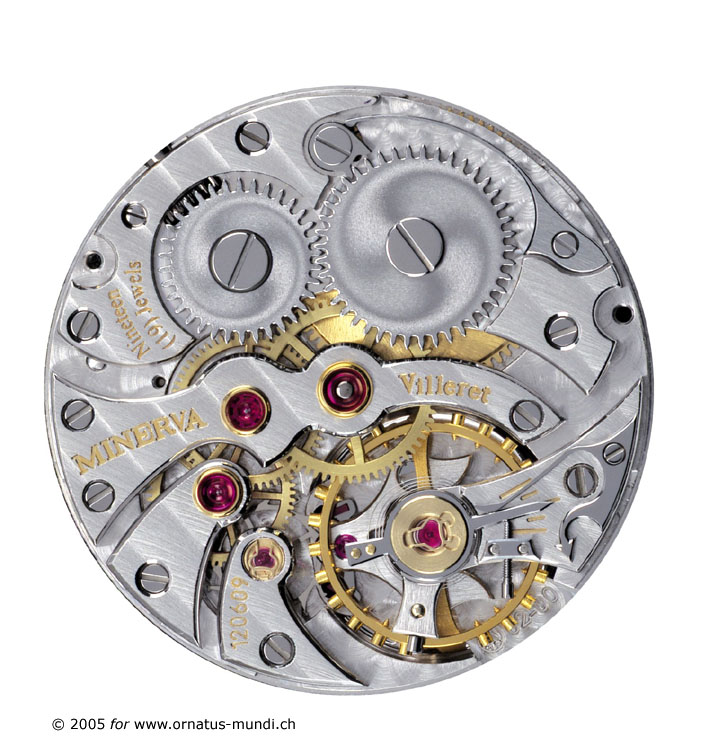
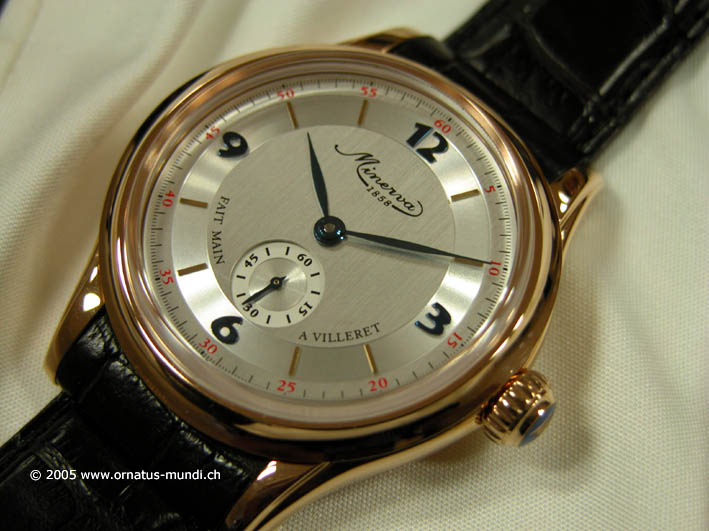
Also the Cal. 13-21 is well-known. The Cal. 13 drove many classical Minerva Chronographs (as mono- and bi-pusher movement, with 30min or 45min counter) and was one of the few manufacture Chronograph calibres on the market. Its most significant and immediately recognisable feature is the position of the pushers: Instead of the usual 30° angle from the crown, the Cal. 13's pushers have moved to the lugs and are located in a greater angle of 37°.
As the Cal. 62-00, this movement is completely newly computed and comes in the same beautiful finish. Like many vintage Chronographs, it is a monopusher design (start-stop-reset controlled in this sequence by only one pusher) and sports the Chronograph pusher at 2 o'clock. The movement has a diameter of 29.5mm and consists of 239 handfinished parts - including the column wheel!
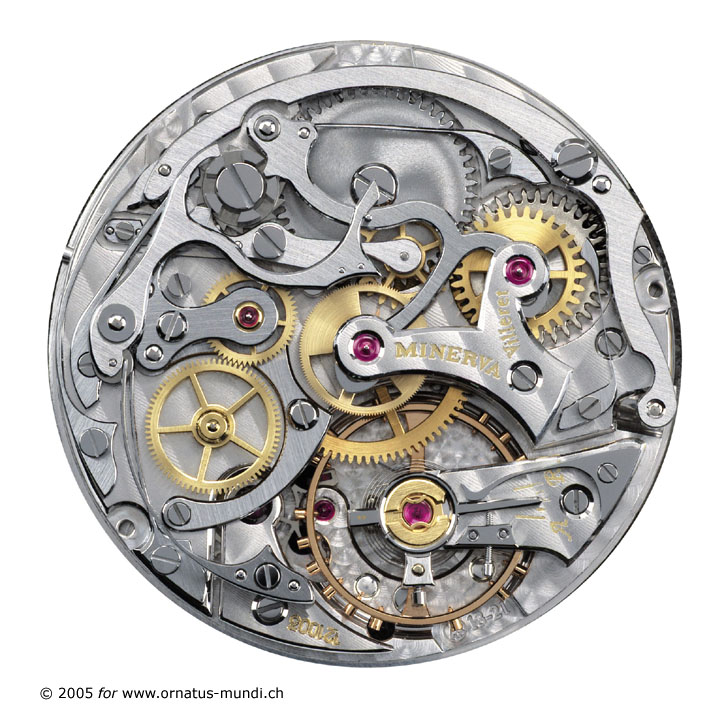
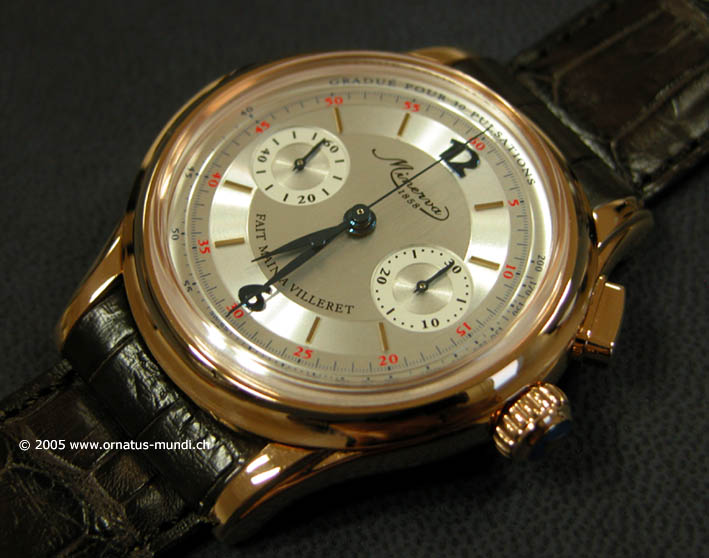
Again, same is apparantly true for the Cal. 16-15. It looks very similar to the famous Cal. 17-13, which came most prominently in the much sought after Minerva 140th Anniversary model, but was also used by Sinn (dashboard clock) and in a very limited edition by Chronoswiss (Pocket Regulateur).
Also the Cal. 16-15 is completely newly computed and comes in the typical, beautiful Minerva finish.The movement has a diameter of 38.4mm and consists of 158 handfinished parts.
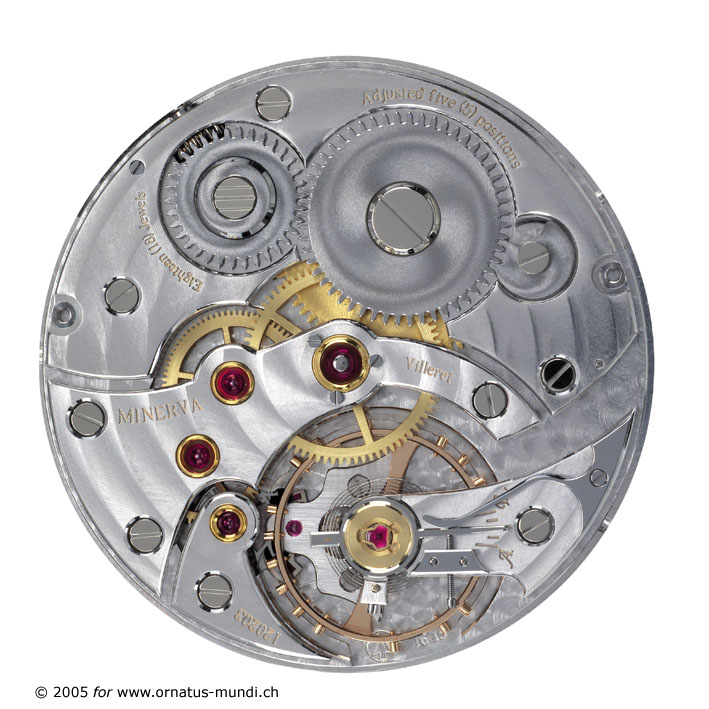
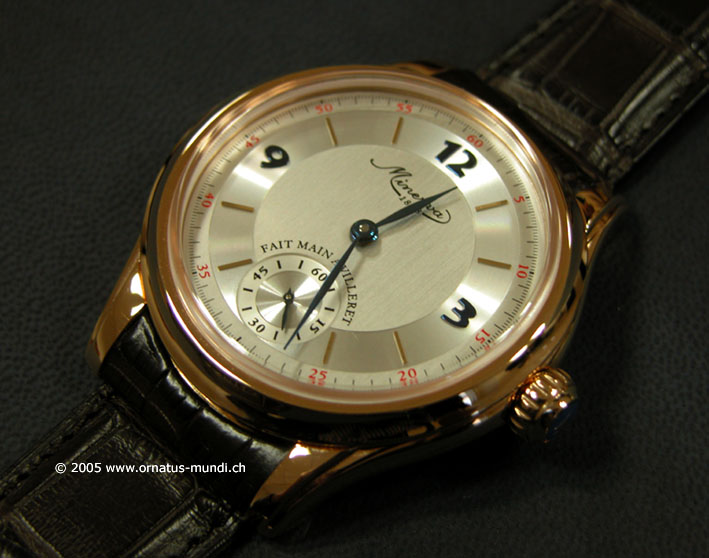
This movement actually is a completely new development (but inspired by an 17" ancient Minerva pocket Chronograph movement).
The Chronograph mechanism is entirely designed and manufactured in Minerva's Villleret premises and builds upon the full-bridge lay-out of the Cal. 16-15. The greater space available allows for an (in my opinion) splendid distribution and shape of the Chronograph levers and wheels. It is somehow very toughing to view these large parts interacting and counting time. Of course, this movement is operated by a column wheel. The Chronograph is equipped - like the Cal. 13-21 it is a monopusher example - with a central seconds counter and a 30min counter at the 3 o'clock position. The pusher is located co-axially in the crown. As I already have shown in section 2, the blocking lever of the seconds counter is executed resembling the Minvery arrow. The movement has a diameter of 38.4mm and consists of 252 handfinished parts.
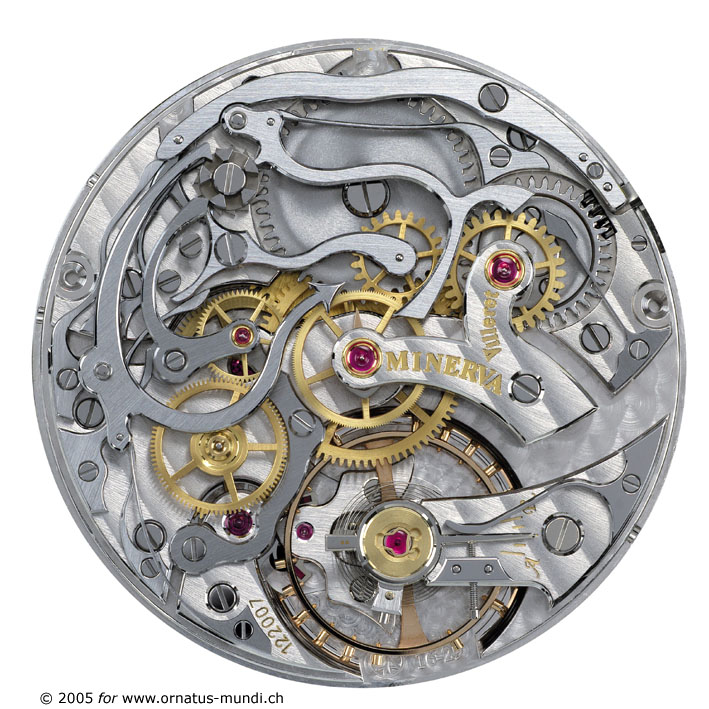

3.5
The Minerva Cal. 65-60 Collection (Tourbillon Mystérieuse;
handwind):
A complication never seen before from Minerva: a Tourbillon! It is,
so I've been told, the Tourbillon with the largest cage in a wristwatch
(nearly 20mm in diameter; large image). It has a proven autonomy of
100h, consists of 280 handfinished parts and is 38.4mm in diameter and
9.7mm in height.
The Tourbillon mechanism is composed of the upper bridge (small image,
left; upper part), the lower cage with the escapement (lower part left)
and the upper cage with the balance (lower part right) and is poised
by small adjusting weights sporting the Minerva arrow (Large image;
small image, left; refer to the small weights on the cage). All parts
are hand polished using a Nickel file with utmost care - no machine
work is involved in this ultmilate steps of finishing (small image,
middle). The assembled Tourbillon cage looks very delicate and fragile,
almost only like a breath of metal (small image, right).
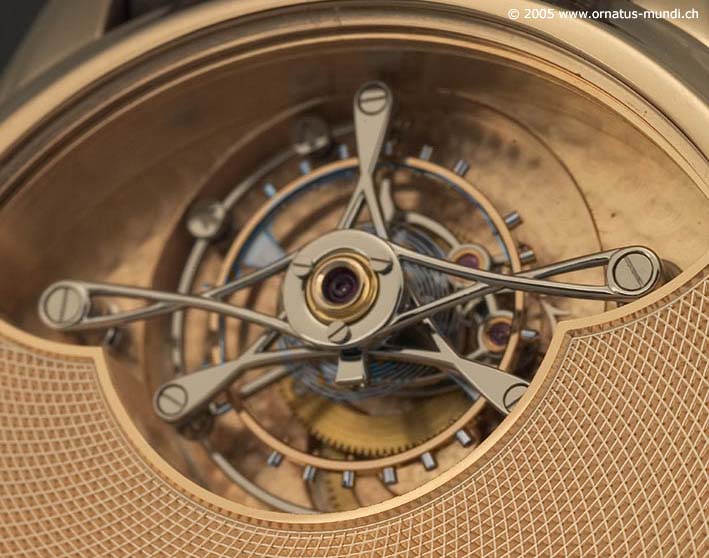
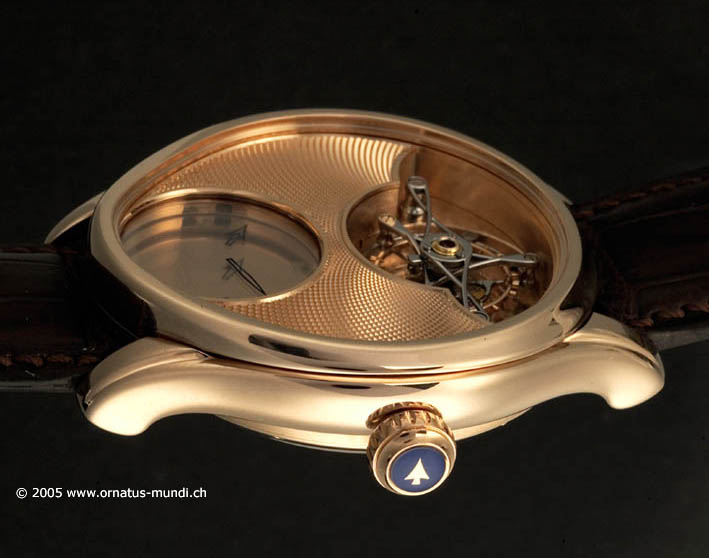
Not only the case, but also the dial is highly complicated to manufacture. It is hand-guilloched of gold, finished in-house using traditional had-operated tools (small image above, left) and finally plated with red gold. The small image above right shows the components of case and dial in different stages of finishing.
As I already indicated further above, it is difficult to come to a final conclusion. The Tourbillon is a masterpiece - no doubt. It is unconventional - no doubt. It is extremely well executed - no doubt! But is this a typical Minerva? Or better, will the collectors appreciate such a watch from a company like Minerva? I have my doubts. The company has mastered an tremendous amount of detail work, updated the production technology and went a long, long journey to gain a rather unique status as one of the very few true and independent manufactures. The Tourbillon makes this manifest in a highly visible fashion. I personally would have preferred a more silent way, that is: a more restrained design. But let's lend your ears to Minerva's CEO, Beppe Menaldo. Please follow me to the next page to a highly interesting interview with him on the presence and the future of Minerva S.A.!
Part
1 - The Introduction
Part 2 - Watchmaking at Minerva
today
Part 3 - The current collection
Part 4 - The
Interview with Minerva's CEO, Beppe Menaldo
